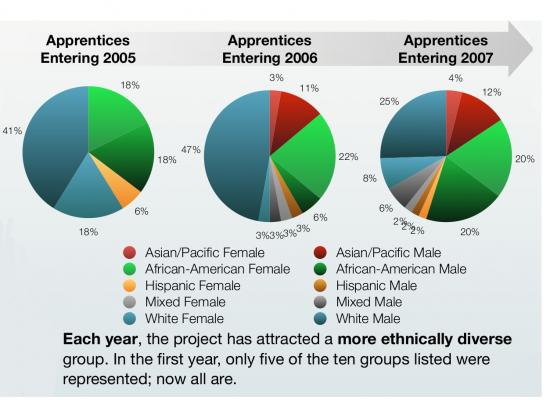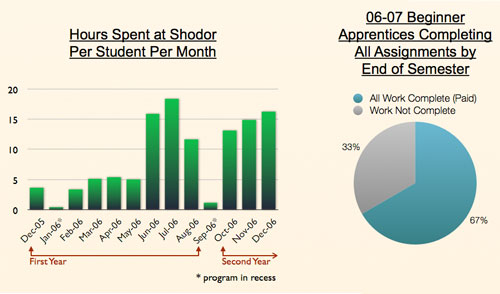Evaluation Method
- Since the program began in 2005, an extensive evaluation process has helped us continually improve the effectiveness of the program's structure and curriculum.
- Evaluation data includes students participation, completion of assignments, personal journals, responses to routine surveys and feedback from staff.
- The outside evaluator has used periodic interviews with students to track their attitudes and career plans.
- An evaluation intern from North Carolina Central University has assisted with the program and learned much in the process.
- The PI and staff are continually monitoring observing and interacting with apprentices seeking ways to improve the program.
Conclusions
- Not only have applications increased over the past three years--the percentage of students who stay with the program has nearly doubled.
-
With the first group of program graduates, we see that these apprenticeships have been:
- successful in maintaining apprentices' interest in science, math and technology as shown by the career plans of the first group to complete the program; a majority maintained their level of interest in math and science.
- highly successful in enabling students to acquire technical, problem solving, collaboration and communication skills valuable for the IT-intensive workplace. The second group will be as or more successful given changes in the program.
Statistics
Below is data on the demographics of the program. The left-hand graph represents students
recruited in the first year of the program (fall 2005), who are now advanced apprentices. The
graph in the middle shows the beginner apprentices who were recruited in the second year of
the program (fall 2006). The graph on the right shoes the beginner apprentices who were
recruited in the third year of the program (fall 2007).

The graph of student participation in the program shows a steadily increasing average in the
number of hours students spend in the program. Participation has become far more regular in
the program's second year. In addition, before the start of the second semester of classes,
two-thirds of the students had completed all their work and received their stipends.
